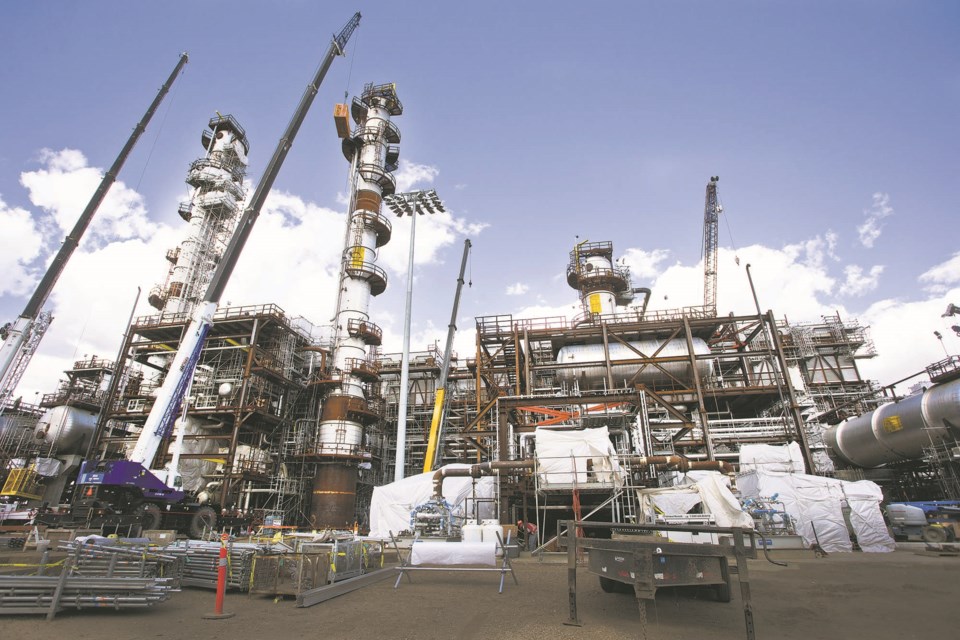The provincial government has launched a pilot project that could bring more jobs and cleaner air and water to Alberta’s Industrial Heartland.
Alberta Environment and Parks Minister Whitney Issik and Associate Minister of Natural Gas and Electricity Dale Nally announced the launch of the Designated Industrial Zone pilot project Aug. 12.
The project aims to draw investment to and create jobs in Alberta’s Industrial Heartland by making it a Designated Industrial Zone — a region where streamlined environmental regulations allow for faster approvals.
Issik said this project will help draw billions of dollars and thousands of jobs to the Heartland by giving investors clear expectations on the environmental rules and reducing red tape. Specifically, the project aims to reduce the time needed to renew a company’s environmental approvals to six months from the current average of 18.
“It does not mean in any way lowering environmental standards,” Issik emphasized, adding that the project will apply higher air pollution standards and new wastewater management plans to the Heartland.
“The goal is simply to provide better clarity and efficiency to companies seeking regulatory approvals.”
St. Albert air quality consultant David Spink said he was skeptical of the province’s claims when he started work on this project two years ago on behalf of the Alberta Environmental Network. Now, as a member of the project’s steering committee, he said he is convinced it could be a win for environmental management.
“They really are looking at managing cumulative impacts of existing development,” Spink said, which is a significant shift from the province’s usual case-by-case approach to industry.
“In many ways, it’s long overdue.”
Same rules, less fluff
Designated Industrial Zones are industrial regions with sufficient land for growth and enough facilities to allow for clustering of infrastructure, the province reports. Within them, area governments agree to align rules for permits, drainage, and environmental protection to speed up approval times and provide companies and investors with clear rules to follow.
A 10-year environmental approval renewal might require a company to send in 14,000 pages of records, many of which the province already has through other reports, explained Laurie Danielson of the Northeast Capital Industrial Association, who sits on the project’s steering committee. The project team has drafted new, slimmer rules which eliminate this duplication.
“We took a document that used to be 130 pages and we turned it into nine,” Danielson said, referring to the province’s guide for environmental approval renewals.
The project also creates new rules for topsoil, Danielson said. Right now, companies must store topsoil they move during construction on site for later reclamation, which means less land available for buildings and a heap of topsoil sitting around unused for decades. This project creates new rules which allow companies to sell their topsoil and move it offsite while also requiring them to buy replacement soil once they cease operations and reclaim their lands.
Spink said this project is backed by studies of baseline conditions of water, air, and wetlands in the Heartland which the province will use to set environmental targets for companies to meet. Spink said he is confident those targets will be much more stringent than those of four years ago and will require companies to cut pollution to make room for more developments.
Danielson said the project, which runs until September 2024, will be evaluated based on its impacts on the environment and environmental approval wait times.
Danielson said this project will put the Heartland in a good position to draw new investment and improve environmental regulation in the region.
“You’ll have employment for decades.”
The Industrial Heartland Designated Industrial Zone framework is set to be formally implemented on Oct. 1. See bit.ly/3C5CI5B for details.




